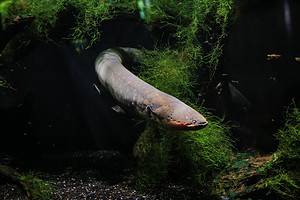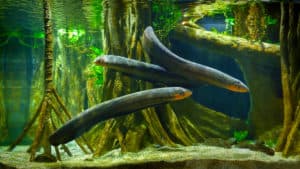Imagine seeing an animal capable of emitting electricity before it was even known to humans. The bioelectric capabilities of the electric eel and other electric fish were man’s first encounter with electric discharge. These creatures roamed the Earth’s waters long before man harnessed the power of electricity for modern living. What did early humans think of these electric animals? And further, what did they call them? Discover what electric eels were called before electricity, along with how eels produce electricity and whether it can be used for power.
Electric Eels Overview
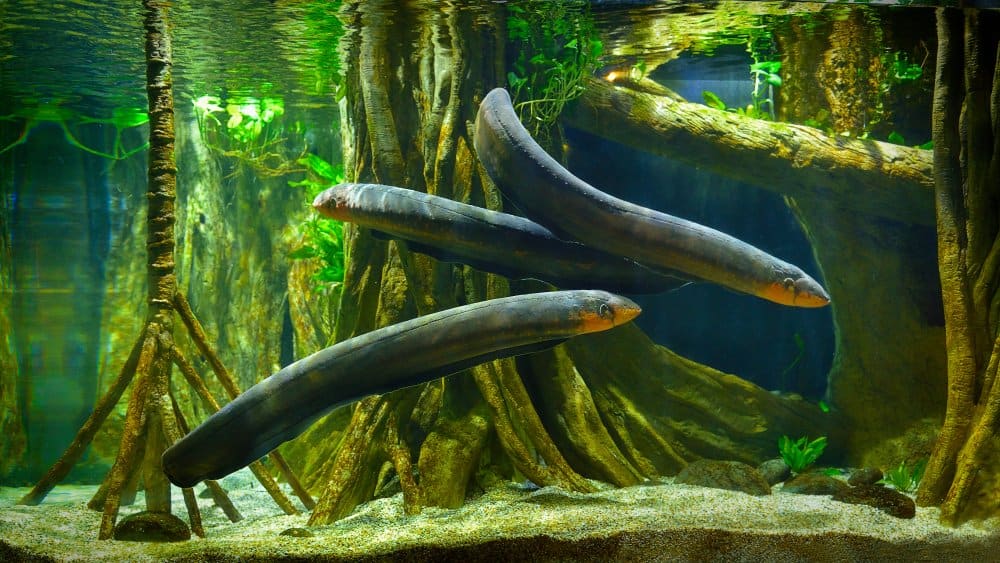
Electric eels hunt underwater or near the surface. But can leap from the water and deliver a powerful jolt to anything they perceive as a threat.
©tristan tan/Shutterstock.com
The electric eel is a neotropical freshwater predator. They are nocturnal fish that spend their days in muddy streams of the Amazon in South America. Electric eels are obligate air breathers that must come to the surface frequently. These eels never stop growing and can keep adding vertebrates to their spine until they die. Some live as long as 20 years, can exceed 8 feet long, and weigh over 40 pounds.
They don’t see well but can emit a low-level charge that acts as a radar to find their prey. Their diet consists of a wide variety of animals, including fish, amphibians, small mammals, and birds. They hunt underwater or near the surface. But can leap from the water and deliver a powerful jolt to anything they perceive as a threat.
Their modern name comes from the electric charge they produce to immobilize prey or neutralize a predator.
Where Do Electric Eels Live?
Electric eels live in calm, murky pools of freshwater in South America. Specifically, they inhabit the Orinoco River basins and the mid to lower Amazon. They can live in small streams, lakes, large rivers, and other types of backwaters. You will primarily find them in the deepest parts of the main river channels.
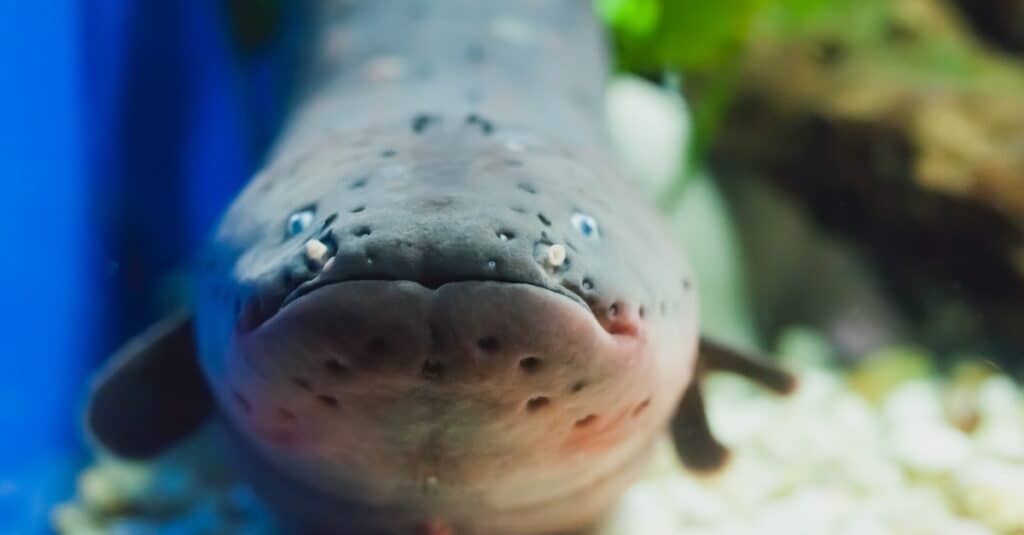
Their modern name comes from the electric charge they produce to immobilize prey or neutralize a predator.
©iStock.com/stacey_newman
How Do Electric Eels Produce Electricity?
The electric eel’s body contains three pairs of electric organs that allow them to generate low-voltage to high-voltage electricity. Their organs hold cells called electrocytes that store power and act as batteries. When the cells discharge, they can cause a powerful jolt to unsuspecting prey and predators.
What Were Electric Eels Called Before Electricity?
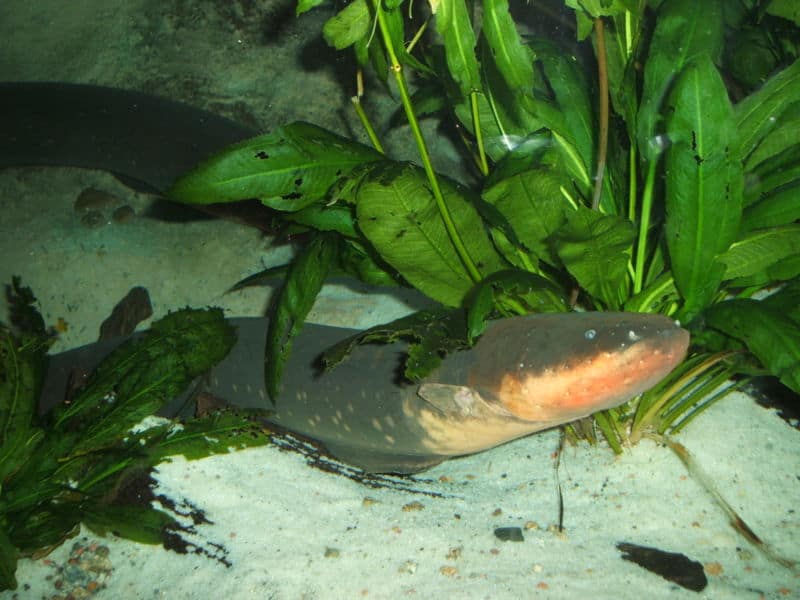
Carl Linnaeus, “the father of modern taxonomy,” named the electric eel
Gymnotus electricusin 1766.
Technically, electricity has always existed. There has never been a time without it. And no one invented it, just discovered its existence. But humans didn’t begin to study it until the 6th century BC when Greek philosopher Miletus began experimenting with amber rods. But Benjamin Franklin was credited with discovering electricity in the 1700s during his kite experiment. And it wasn’t introduced into homes until the late 19th century.
When Europeans first recorded the electric eel’s existence in the 1740s, they already understood some of their electric capabilities. Carl Linnaeus, “the father of modern taxonomy,” named the electric eel Gymnotus electricus in 1766.
Long before the Europeans studied the electric eel, indigenous people from South America had their own names for animals. Unfortunately, there are no records of what the natives may have called electric eels before the discovery of electricity.
Other electric fish also existed in other parts of the world during ancient times. For instance, ancient Egyptians called electric fish “the thunderer of the Nile.”
Whatever names people used to describe these remarkable creatures, they definitely propelled the research of electricity.
Can Electric Eels Be Used for Power?
Electric eels can produce a charge of up to 600 volts of electricity. This high voltage can produce severe burns and even damage internal organs like the heart. So, swimming with them is out of the question. But can you harness their battery-like organs to produce electricity? Technically, yes. This phenomenon was witnessed when the Tennessee Aquarium used a tank of electric eels to power the bright lights on a Christmas tree. However, the flow of energy is inconsistent and only works when the eels feel like discharging their cells.
The photo featured at the top of this post is © Danny Ye/Shutterstock.com
Thank you for reading! Have some feedback for us? Contact the AZ Animals editorial team.



